Physical Address
304 North Cardinal St.
Dorchester Center, MA 02124
Physical Address
304 North Cardinal St.
Dorchester Center, MA 02124
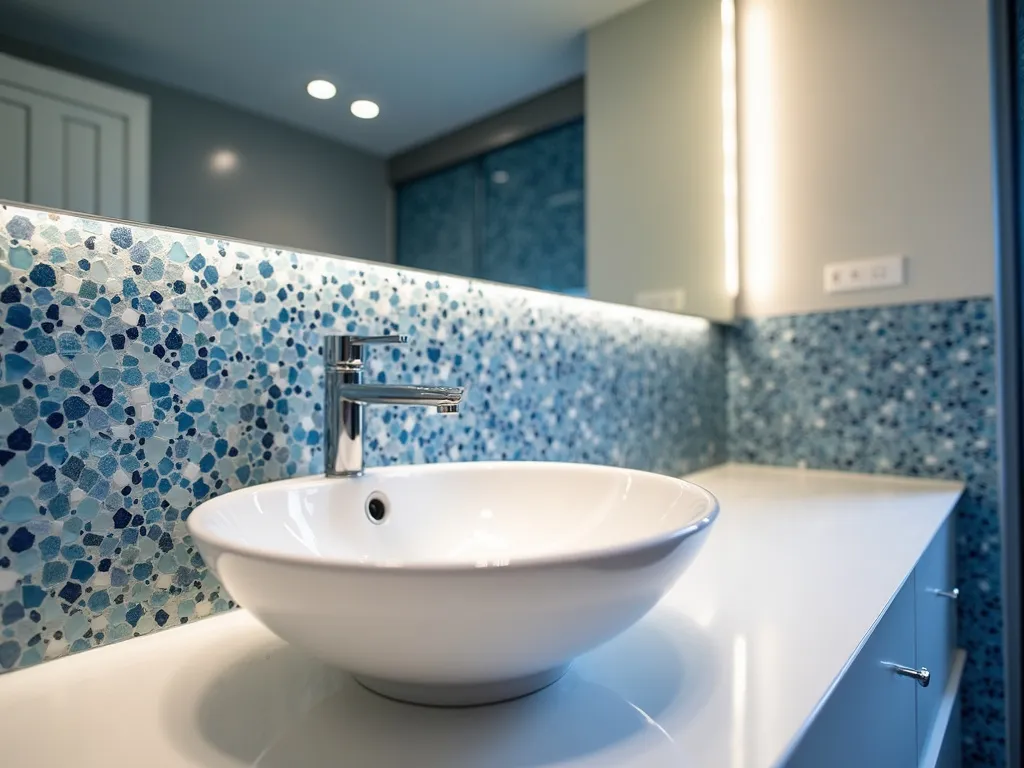
Your bathroom is more than just a functional space—it’s a sanctuary where you begin and end each day. As a wellness design expert, I’ve seen firsthand how the right tile choices can transform a bathroom from a purely utilitarian space into a rejuvenating retreat that nurtures both body and mind. Today, I’m excited to share my curated collection of bathroom tile ideas that will help you create a space that not only looks beautiful but feels deeply harmonious with your daily rituals.
The humble Subway Tile has been a bathroom staple for over a century, and for good reason. Its clean lines and timeless appeal have made it a go-to choice for countless homeowners. However, there’s so much more potential in this classic tile than meets the eye. By reimagining how we use subway tiles, we can create spaces that honor tradition while embracing contemporary creativity.
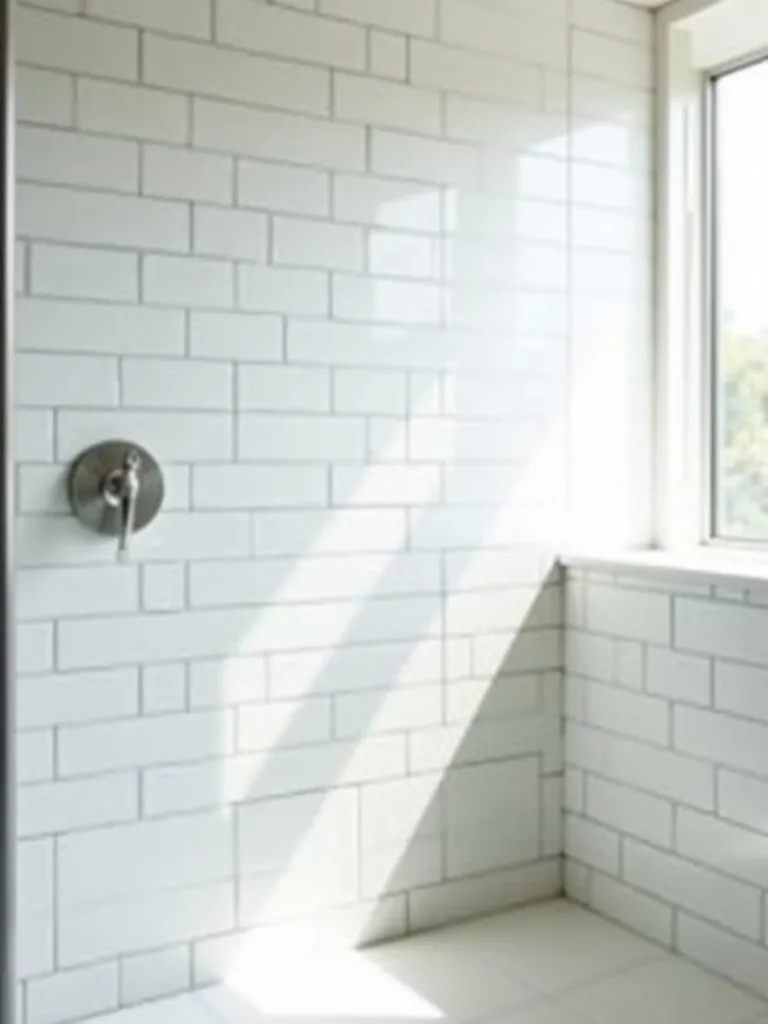
Consider this: the very first subway tiles were installed in New York City’s underground stations in the early 1900s, chosen for their durability and ease of cleaning. Today, we can take these same practical qualities and elevate them through thoughtful design choices. One of my favorite approaches is to rotate the traditional horizontal layout 90 degrees, creating a vertical stack that draws the eye upward and makes your ceiling feel higher.
“The beauty of subway tile lies not in its simplicity, but in its versatility. Each different layout pattern tells its own unique story in your space.”
The transition from classic to contemporary can be as subtle or dramatic as you desire. Try experimenting with dark grout against white tiles to highlight the pattern, or mix different sizes of rectangular tiles within the same color family for added visual interest. As we move forward, let’s explore how we can add even more intricate detail to your Bathroom design.
There’s something truly magical about mosaic tiles that speaks to our ancient connection with artistic expression. These tiny pieces of ceramic, glass, or stone come together to create something greater than the sum of their parts, much like the individual moments that make up our daily rituals. In bathroom design, mosaics offer an opportunity to introduce intricate patterns and personal expression in a way that larger tiles simply cannot achieve.
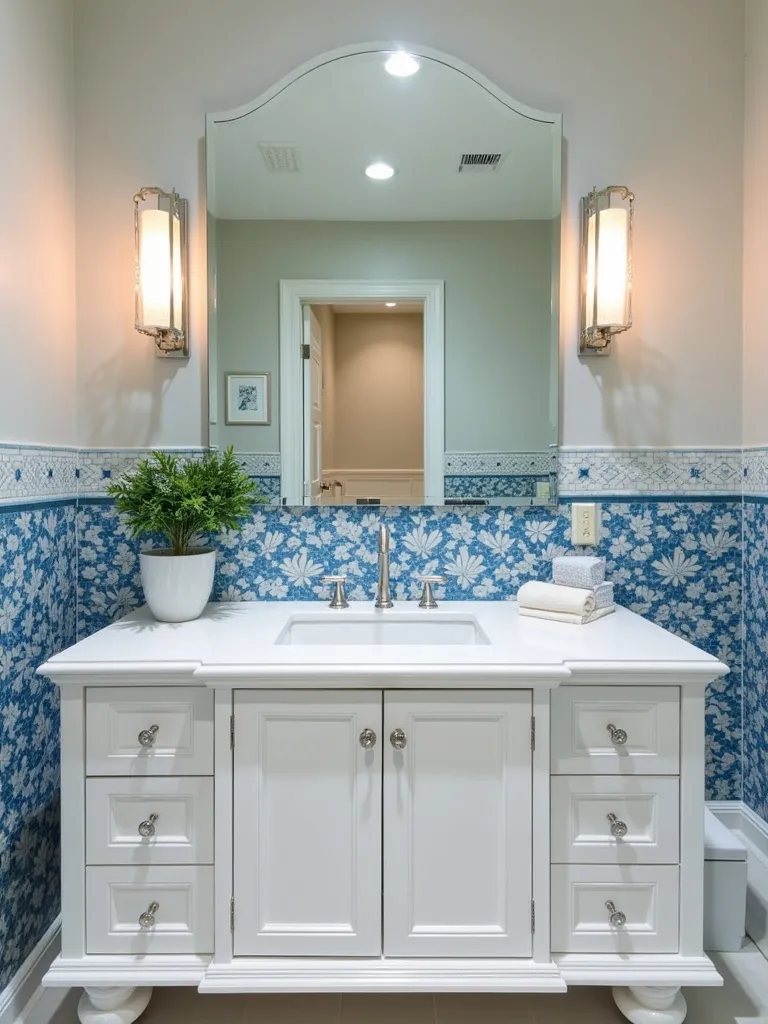
The history of mosaics stretches back thousands of years to ancient civilizations, where they were used to tell stories and create beauty in both public and private spaces. Today, we can harness this rich tradition to create focal points that capture attention and spark joy. A shower niche lined with iridescent mosaic tiles can become a beautiful shrine to self-care, while a mosaic accent wall can transform your bathroom into a personal art gallery.
Consider these placement options for maximum impact:
The key to successful mosaic implementation lies in finding the right balance. Start with pre-mounted mosaic sheets for easier installation, and choose a grout color that enhances rather than overwhelms your design. As we explore our next tile idea, we’ll see how going in the opposite direction—with larger format tiles—can create equally stunning results.
In the pursuit of creating serene, uncluttered spaces, large format tiles have emerged as a powerful tool in bathroom design. These impressive tiles, typically measuring larger than 12×24 inches, can transform your bathroom into a sanctuary of clean lines and visual calm. The minimal grout lines create an almost seamless appearance, allowing your mind to rest and your eyes to flow smoothly across the space.
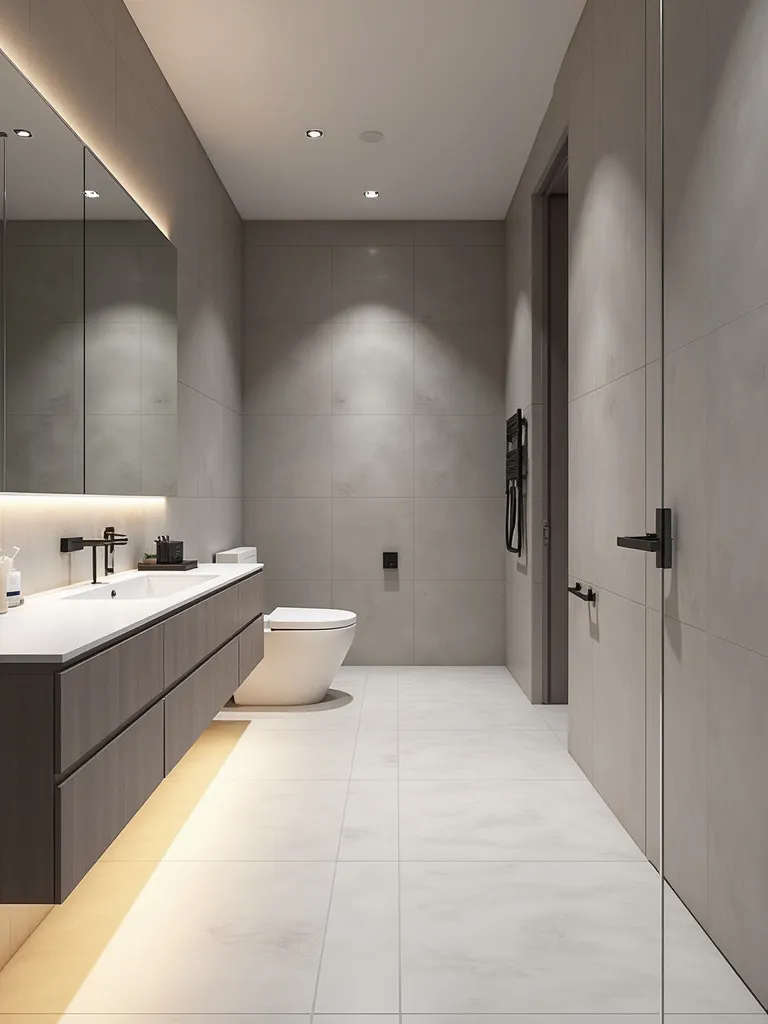
The psychological impact of large format tiles shouldn’t be underestimated. When we reduce visual interruptions in our environment, we naturally experience a sense of calm and spaciousness. This effect is particularly powerful in smaller bathrooms, where fewer grout lines can make the room feel significantly larger. The practical benefits are equally compelling—less grout means fewer places for mold and mildew to develop, making cleaning and maintenance much simpler.
Essential considerations for large format tiles:
As we transition to our next topic, consider how these grand-scale tiles could serve as a beautiful backdrop for more delicate design elements, such as our next discussion on the charming appeal of penny tiles.
There’s something inherently joyful about penny tiles that brings a smile to my face every time I incorporate them into a design. These small, circular tiles, roughly the size of their namesake coin, carry with them a sense of nostalgia while remaining surprisingly relevant in contemporary design. Their ability to bridge the gap between vintage charm and modern sensibility makes them a versatile choice for bathroom tile ideas that stand the test of time.
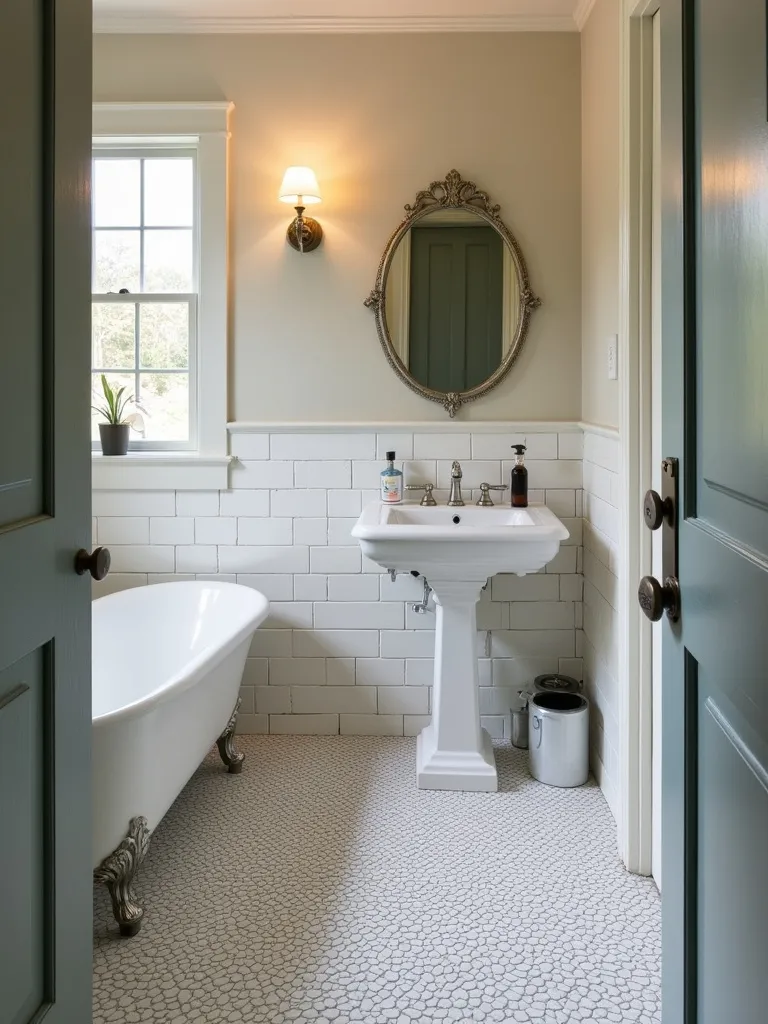
The history of penny tiles dates back to the early 20th century, where they were a popular choice in both residential and commercial spaces. Their small size naturally created a non-slip surface, making them particularly well-suited for bathroom floors. Today, we can harness this practical benefit while playing with modern interpretations of this classic tile.
Here are some fresh ways to incorporate penny tiles into your bathroom:
Looking ahead to our next section, we’ll dive into the technical aspects of choosing the right tile material for your specific needs, ensuring your beautiful design stands up to daily use.
The foundation of any successful bathroom tile design lies in choosing the right material for your specific needs. While porcelain and ceramic tiles might look similar at first glance, understanding their unique properties can make the difference between a bathroom that merely looks good and one that performs beautifully for years to come.
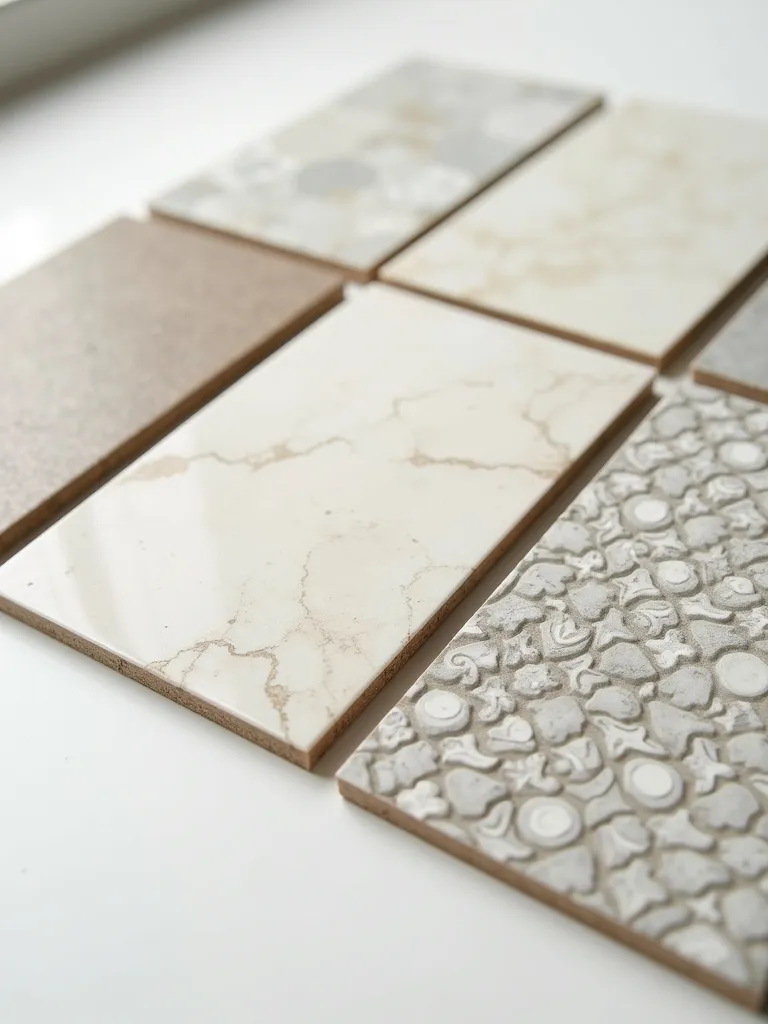
Porcelain tiles are the heavyweight champions of the bathroom world, quite literally. Their dense composition makes them incredibly water-resistant and durable, with a water absorption rate of less than 0.5%. This makes them ideal for high-moisture areas like shower floors and walls. They’re also harder than ceramic tiles, making them more resistant to chips and scratches—perfect for high-traffic bathroom floors.
Understanding Tile Properties:
As we move into our exploration of Natural Stone tiles, keep in mind that every material choice contributes to both the aesthetic and functional aspects of your bathroom sanctuary.
Natural stone tiles bring an unmatched sense of organic luxury to bathroom spaces, creating an immediate connection to the earth beneath our feet. Each piece of marble, travertine, slate, or limestone tells its own geological story, formed over millions of years and bringing that sense of timeless beauty into your daily routine. The variations in color, veining, and texture that make each stone tile unique can transform your bathroom into a personal spa retreat.
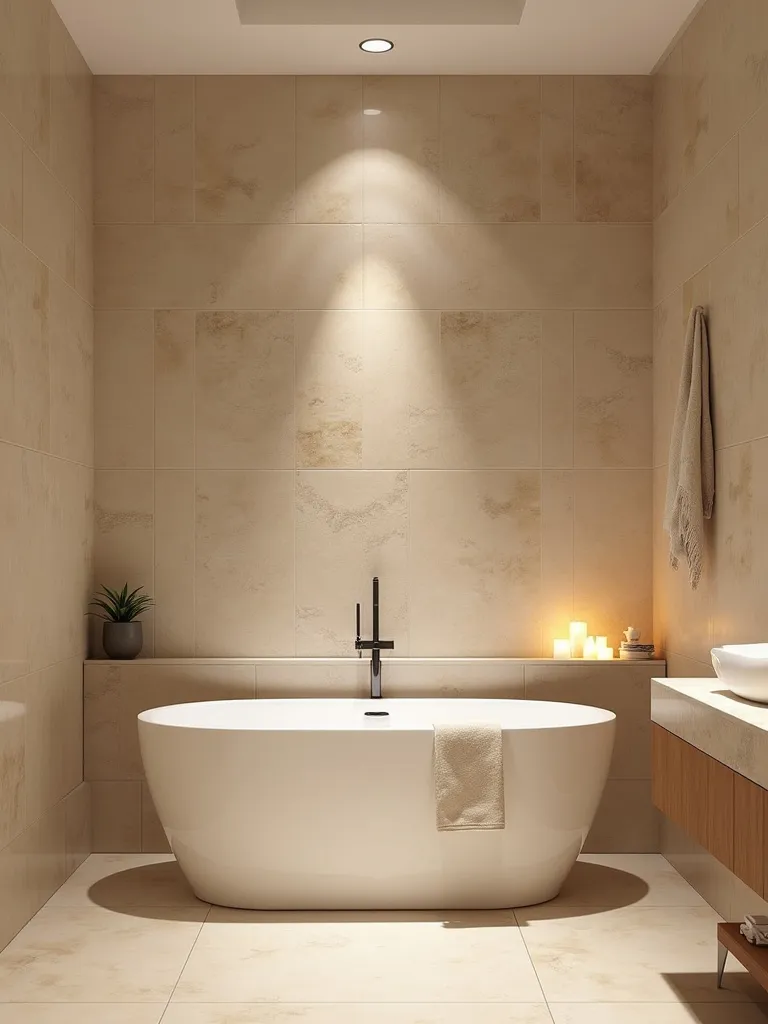
When selecting natural stone for your bathroom tile ideas, it’s essential to understand each type’s unique characteristics. Marble, with its classic veining, brings timeless elegance but requires regular maintenance. Travertine offers warm, earthy tones and natural pitting that creates interesting texture, while slate provides excellent slip resistance and dramatic color variations. Limestone’s soft, matte finish can create a serene, understated backdrop for your bathroom design.
Natural Stone Care Essentials:
As we look ahead to our next section on herringbone patterns, consider how these natural materials could be arranged in dynamic ways to create even more visual interest in your space.
The herringbone pattern holds a special place in my heart for its ability to bring movement and energy to a space while maintaining an air of sophistication. This classic pattern, inspired by the skeletal structure of herring fish, creates a dynamic visual flow that can guide movement through your bathroom while adding a layer of architectural interest that elevates the entire design.
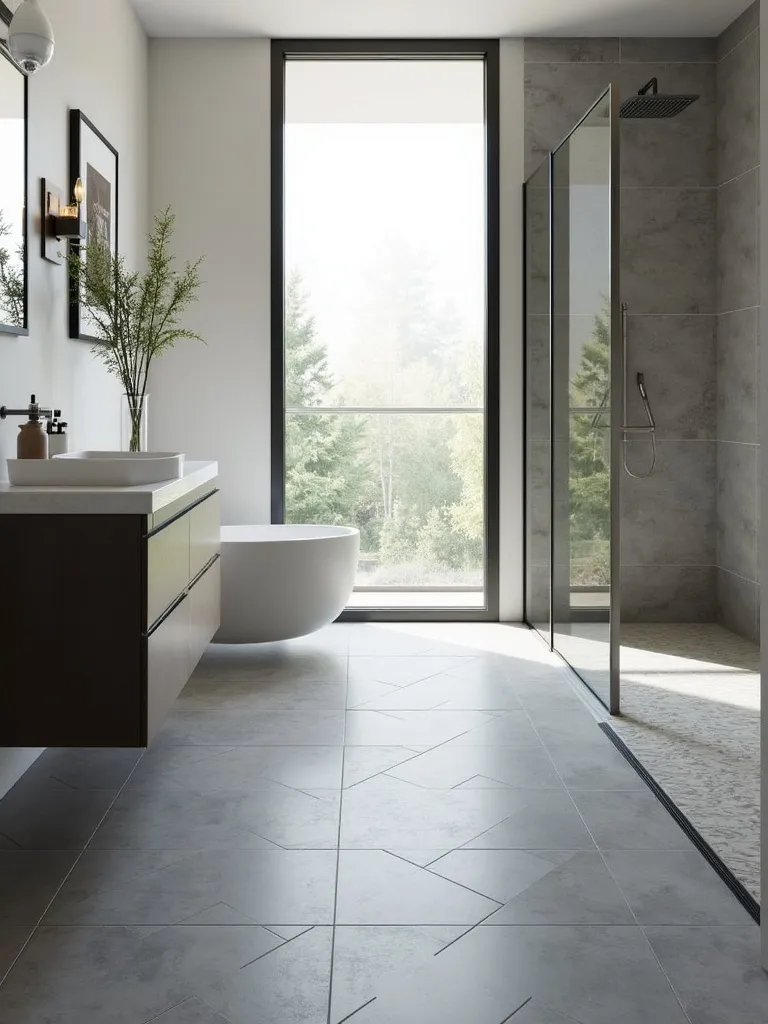
When implementing herringbone patterns in bathroom tile ideas, consider how the pattern’s directional nature can influence the perception of your space. A horizontal herringbone layout can make a room feel wider, while a vertical arrangement can elongate it, making it appear taller. The pattern’s versatility allows it to work equally well with various tile materials, from classic marble to modern porcelain wood-look tiles.
For successful herringbone installation, keep these factors in mind:
Looking ahead to our next section on stacked patterns, we’ll explore how simplifying tile layouts can create equally striking results through different means.
In a world full of complex patterns and busy designs, there’s something refreshingly honest about the stacked tile pattern. This modern approach to tile layout strips away the complexity, allowing the inherent beauty of each tile to shine through while creating a sense of calm through repetition and alignment. The result is a clean, contemporary look that can make your bathroom feel like a modern art gallery.
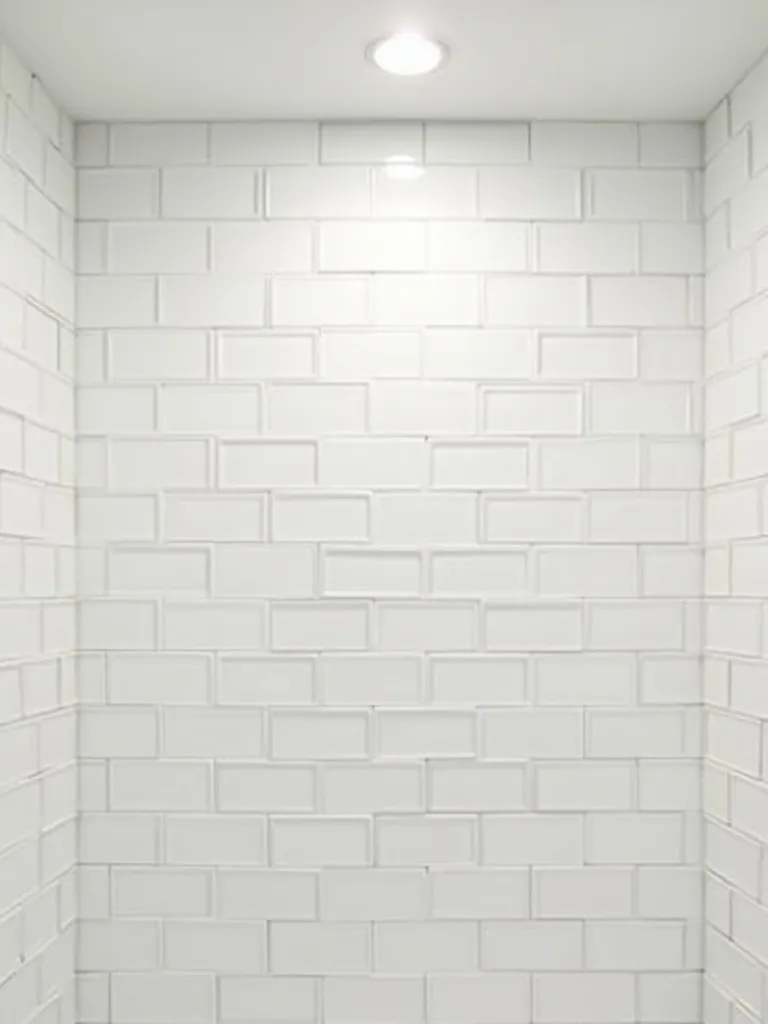
The beauty of stacked tile layouts lies in their versatility. Whether you choose large format tiles for dramatic effect or standard subway tiles for a more intimate feel, the stacked pattern creates strong horizontal or vertical lines that can be used to influence the visual flow of your space. This approach works particularly well in contemporary bathrooms where simplicity and clean lines are paramount.
Essential elements for successful stacked tile installation:
As we transition to our next section, we’ll explore how vertical arrangements can take this simple pattern to new heights—literally.
The power of vertical lines in design has long been recognized for its ability to draw the eye upward, creating a sense of elevation and spaciousness. When we apply this principle to bathroom tile ideas, we can transform even the most modest spaces into rooms that feel more expansive and uplifting. This optical illusion can have a profound impact on how we experience our daily routines, making our bathrooms feel more open and inviting.
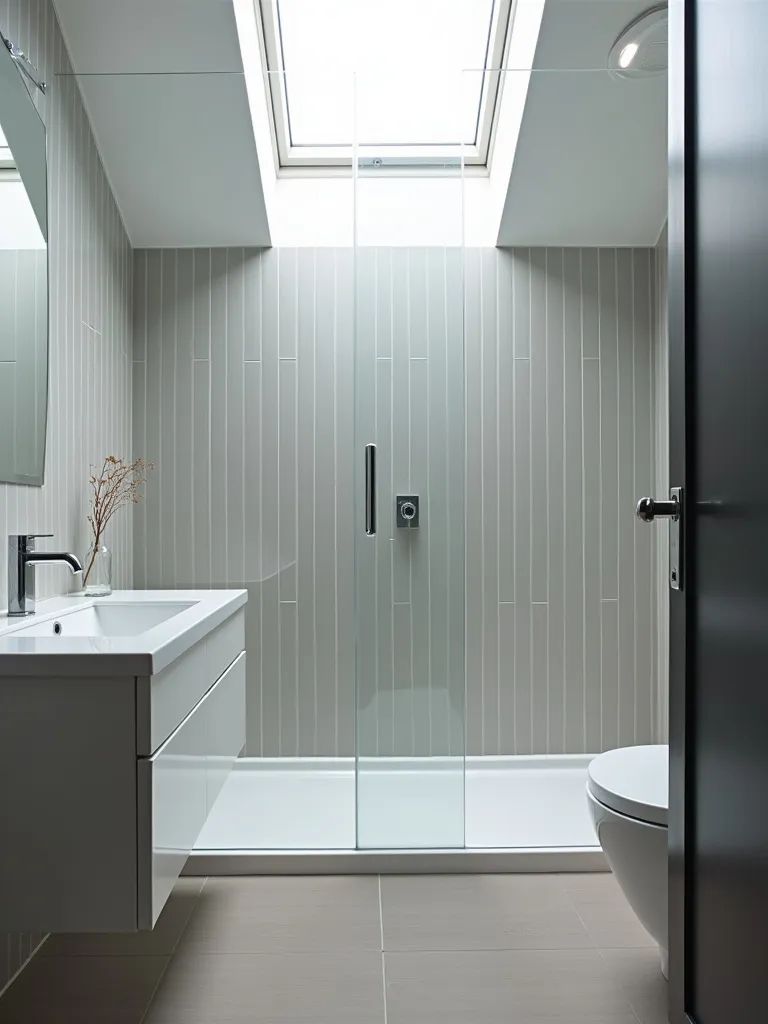
The psychology behind vertical layouts is fascinating. Just as standing up straight can make us feel more confident, vertical Tile Patterns can imbue a space with a sense of dignity and presence. This is particularly effective in smaller bathrooms or those with lower ceilings, where the vertical lines create an illusion of height that can make the space feel significantly more generous.
Consider these vertical tiling strategies:
As we move into our exploration of chevron patterns, imagine how we might combine these uplifting vertical elements with more dynamic angular designs.
There’s something inherently energizing about chevron patterns that speaks to our natural attraction to movement and flow. These bold, V-shaped arrangements can transform a bathroom from a static space into one that feels alive with dynamic energy. When used thoughtfully in bathroom tile ideas, chevron patterns can create a sense of forward momentum that guides us through our daily rituals with purpose and vitality.
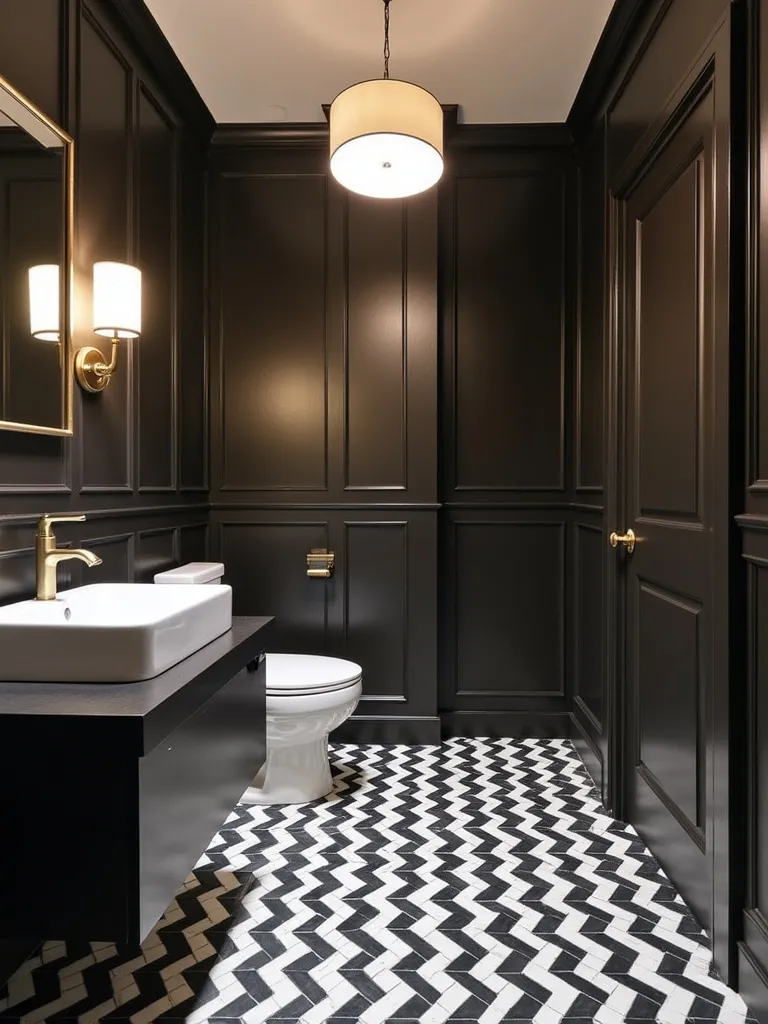
The chevron pattern’s ability to direct movement makes it particularly powerful in bathroom design. Unlike its cousin the herringbone, chevron creates clean, sharp angles that feel more deliberate and modern. This intentional directionality can be used to draw attention to specific features of your bathroom or create a natural flow from one area to another.
Key considerations for chevron success:
Let’s transition to exploring the gentle, woven beauty of basketweave patterns, which offer a different kind of visual rhythm.
The basketweave pattern holds a special place in design history, offering a sense of craftsmanship and tradition that resonates deeply with our appreciation for handmade textures. This intricate weaving pattern, translated into tile, creates a surface that feels both sophisticated and grounding. It’s as if the floor itself tells a story of ancient craft traditions, bringing a sense of history and permanence to your bathroom sanctuary.
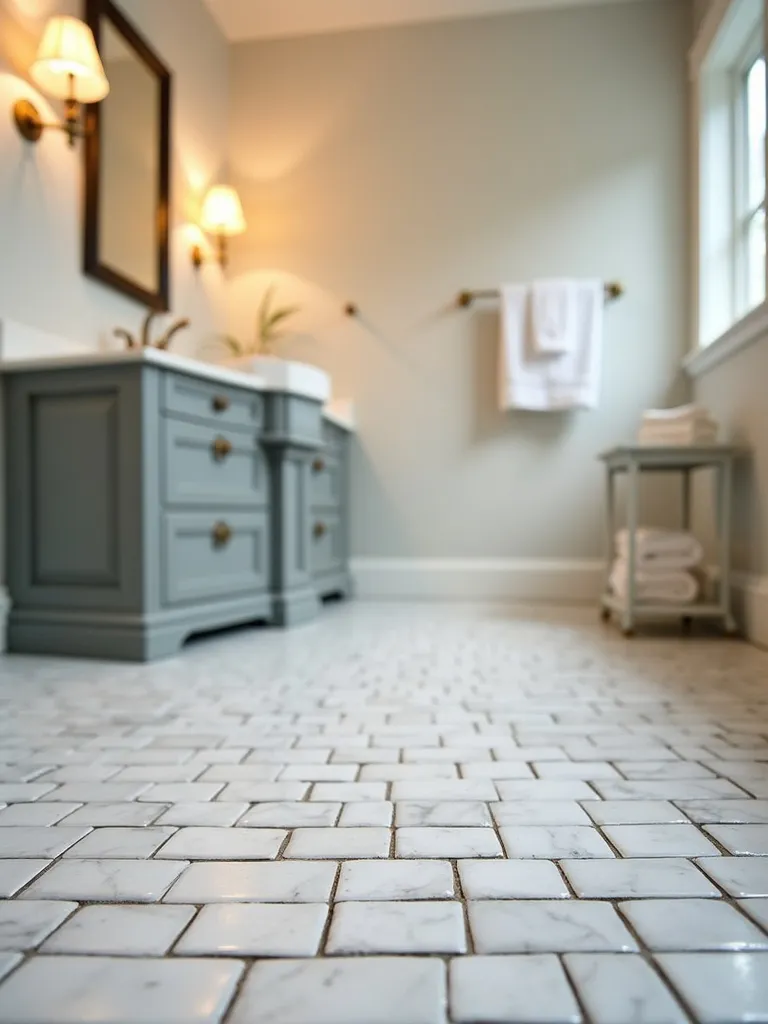
What makes basketweave particularly fascinating is its ability to create visual interest through structure rather than color. The alternating orientation of rectangular tiles creates shadows and highlights that shift throughout the day, adding a subtle but dynamic quality to your space. This interplay of light and shadow can help create a more mindful environment, where even the smallest details contribute to the overall sense of wellbeing.
Basketweave pattern principles:
As we look ahead to exploring bold color choices, consider how this classic pattern might be reimagined through unexpected color combinations.
Color has the remarkable ability to influence our emotions and energy levels, making it a powerful tool in creating a bathroom that truly resonates with your personality and desired mood. Bold tile colors can transform your bathroom from a purely functional space into one that energizes, uplifts, or calms, depending on your choice of hue. The key lies in understanding how different colors affect our psychological state and using this knowledge to create intentional, mood-enhancing spaces.
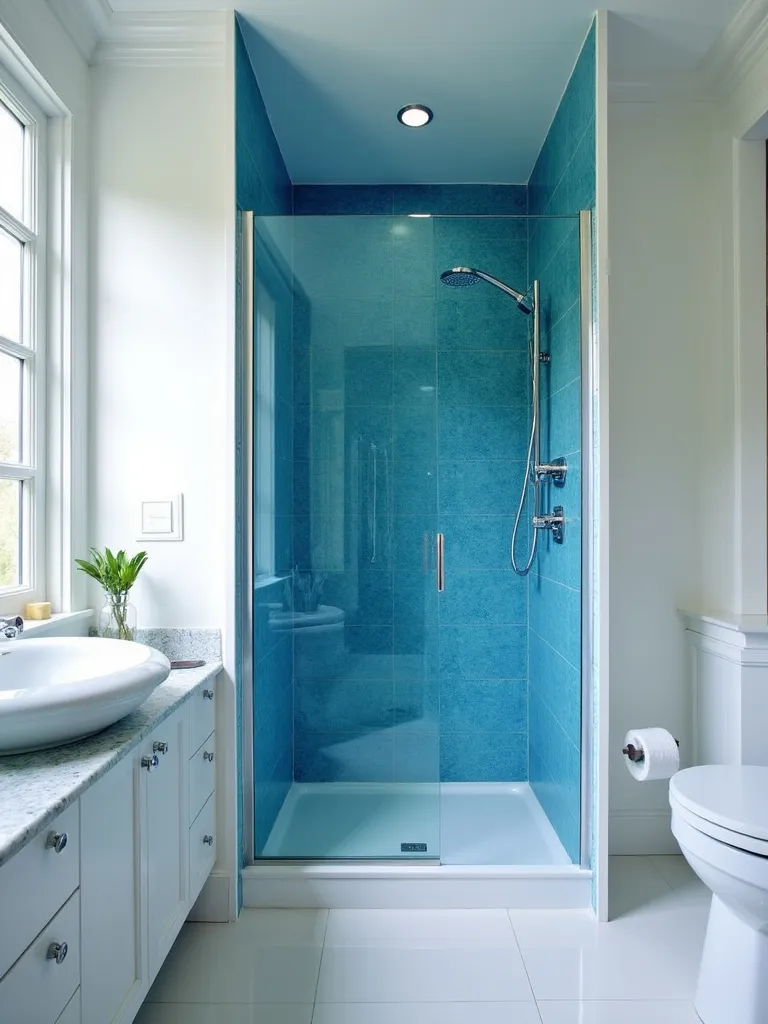
The science of color psychology tells us that different shades can evoke specific emotional responses. Blues can promote feelings of calm and cleanliness, while yellows can energize and uplift. Greens connect us to nature and promote balance, and bold coral or pink tones can add warmth and creativity to your space. When incorporating these vibrant bathroom tile ideas, consider how different colors might support your daily routines and emotional wellbeing.
Color integration strategies:
Moving forward, we’ll explore how neutral tones can create equally impactful designs through their subtle sophistication.
In our fast-paced world, creating a bathroom that serves as a peaceful retreat becomes increasingly important. Neutral tile tones provide the perfect foundation for such a sanctuary, offering a visual calm that allows both mind and body to relax. These understated hues create a timeless backdrop that promotes a sense of tranquility while maintaining sophisticated elegance.

Working with neutrals requires a deeper understanding of undertones and texture. Rather than relying on bold color contrasts, neutral schemes draw interest through subtle variations in shade, finish, and material. This layered approach creates depth and visual interest while maintaining the serene atmosphere that makes neutral bathrooms so appealing. Think of it as creating a symphony in shades of beige, grey, and white, where each element contributes to the overall harmony of the space.
Design principles for neutral success:
As we transition to exploring decorative tiles, consider how these neutral foundations might be enhanced with thoughtful pattern additions.
The inclusion of decorative tiles in your bathroom can create a profound shift in how you experience the space. Like artwork in a gallery, patterned tiles have the power to tell stories, evoke emotions, and transform ordinary moments into opportunities for inspiration. When thoughtfully incorporated into bathroom tile ideas, decorative patterns can create focal points that ground us in the present moment and add layers of meaning to our daily routines.
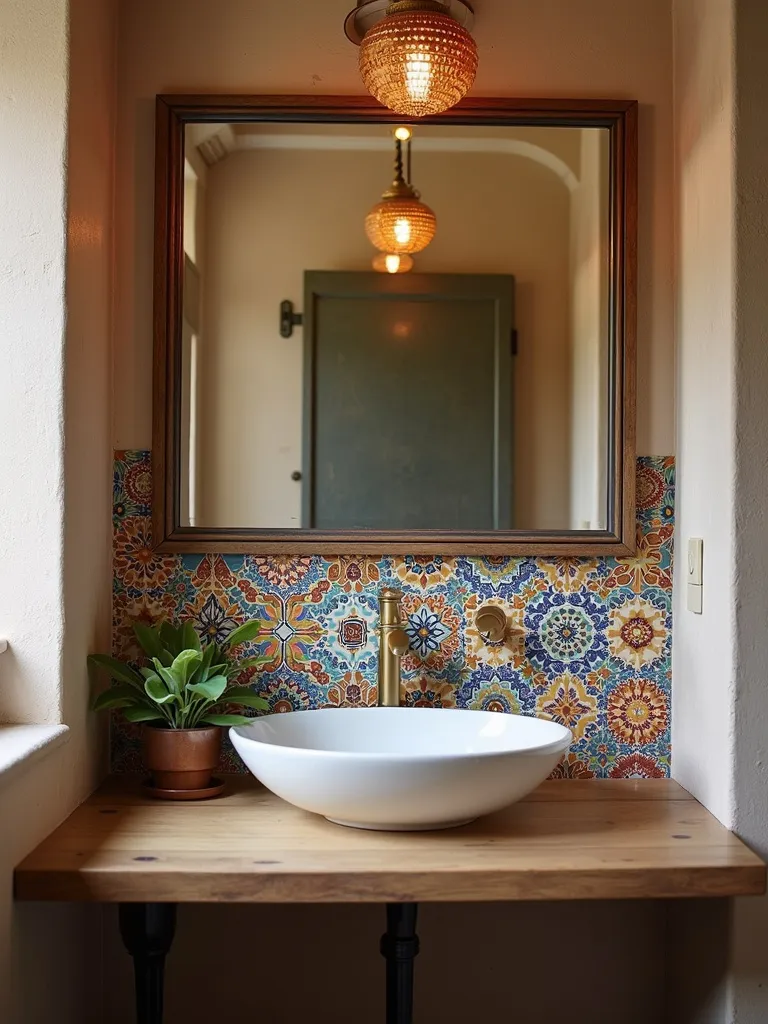
Throughout history, cultures worldwide have used decorative tiles to express their artistic heritage and spiritual beliefs. From intricate Moroccan patterns to bold geometric Art Deco designs, these artistic expressions continue to resonate with our desire for beauty and meaning in our surroundings. The key to successfully incorporating decorative tiles lies in finding patterns that speak to your personal aesthetic while creating a balanced and harmonious environment.
Guidelines for pattern integration:
As we move forward to explore textured tiles, consider how pattern and texture might work together to create multi-sensory experiences in your space.
In our increasingly digital world, incorporating tactile elements into our living spaces becomes ever more important for maintaining our connection to the physical world. Textured tiles offer an opportunity to engage our sense of touch, creating a more grounding and present experience in our daily routines. These three-dimensional surfaces add depth not just visually, but experientially, making our bathrooms more engaging and mindfully designed spaces.
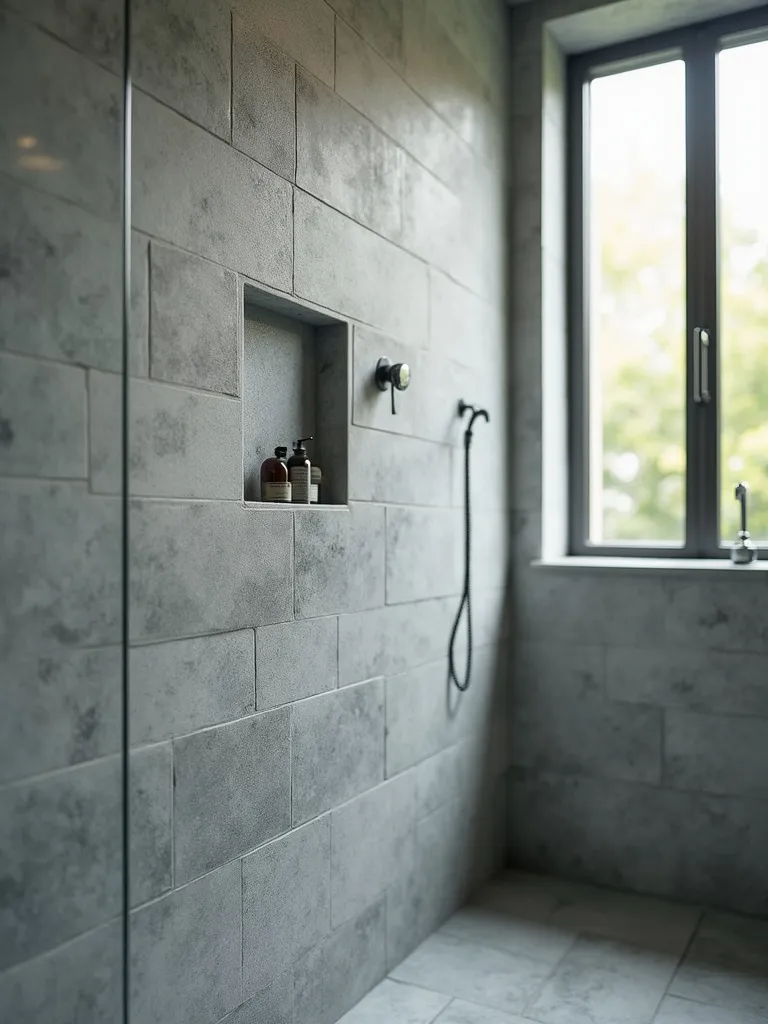
The psychological benefits of tactile stimulation are well-documented, showing that varied textures can help reduce stress and increase our sense of connection to our environment. When selecting textured tiles for your bathroom, consider how different surfaces might support various activities and moods. A gently rippled tile might create a sense of flowing water in your shower area, while a more pronounced texture could provide practical slip resistance in wet areas.
Important considerations for textured tiles:
Let’s explore how these textural elements might be incorporated into a striking feature wall design.
The concept of a feature wall in bathroom design serves a purpose beyond mere decoration—it creates a focal point that can help center us in the space and provide a visual anchor for our daily rituals. When thoughtfully executed, a feature wall can transform your bathroom from a purely functional space into one that tells a story and creates a meaningful connection with its users.
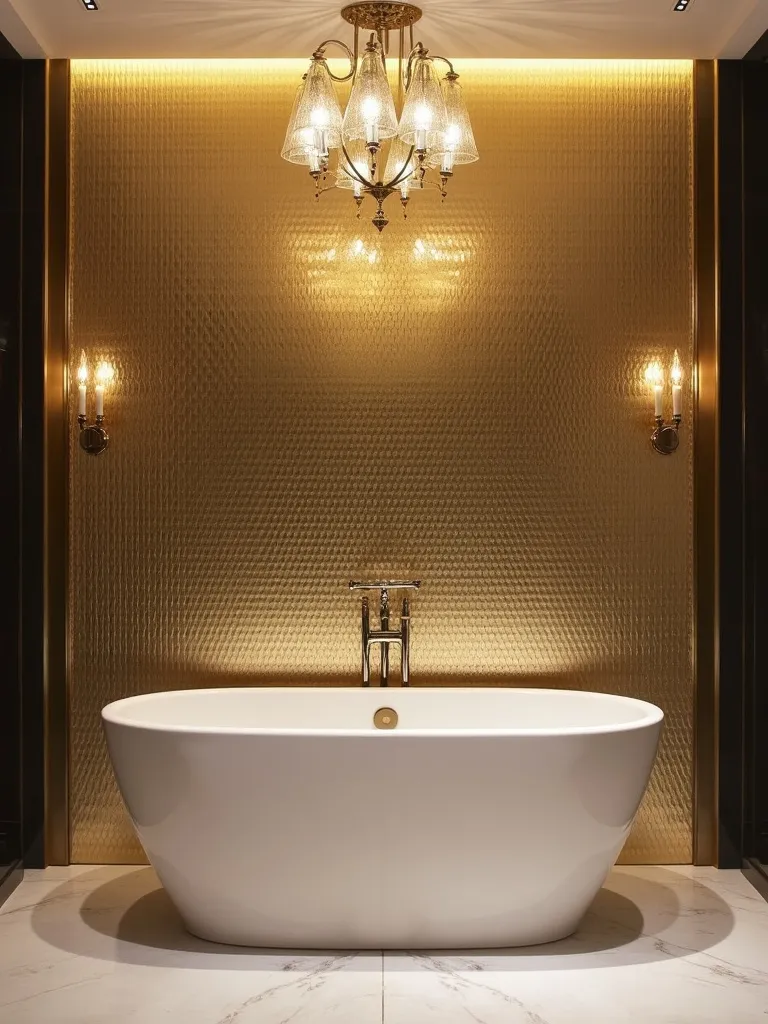
The psychology of focal points suggests that having a deliberate area of visual interest can help reduce mental clutter and create a sense of order in our environment. Whether you choose to create your feature wall with bold geometric patterns, shimmering metallic tiles, or dramatic natural stone, the key is to ensure it reflects your personal style while maintaining harmony with the overall design of your bathroom.
Feature wall success strategies:
As we consider the practical aspects of bathroom design, let’s explore how functional elements like shower niches can become beautiful design features themselves.
Shower niches represent the perfect marriage of form and function in bathroom design. These built-in storage solutions offer an opportunity to create moments of beauty within the practical aspects of our daily routines. By thoughtfully designing these spaces, we can transform necessary storage into artistic elements that contribute to the overall aesthetic while supporting our wellness rituals.
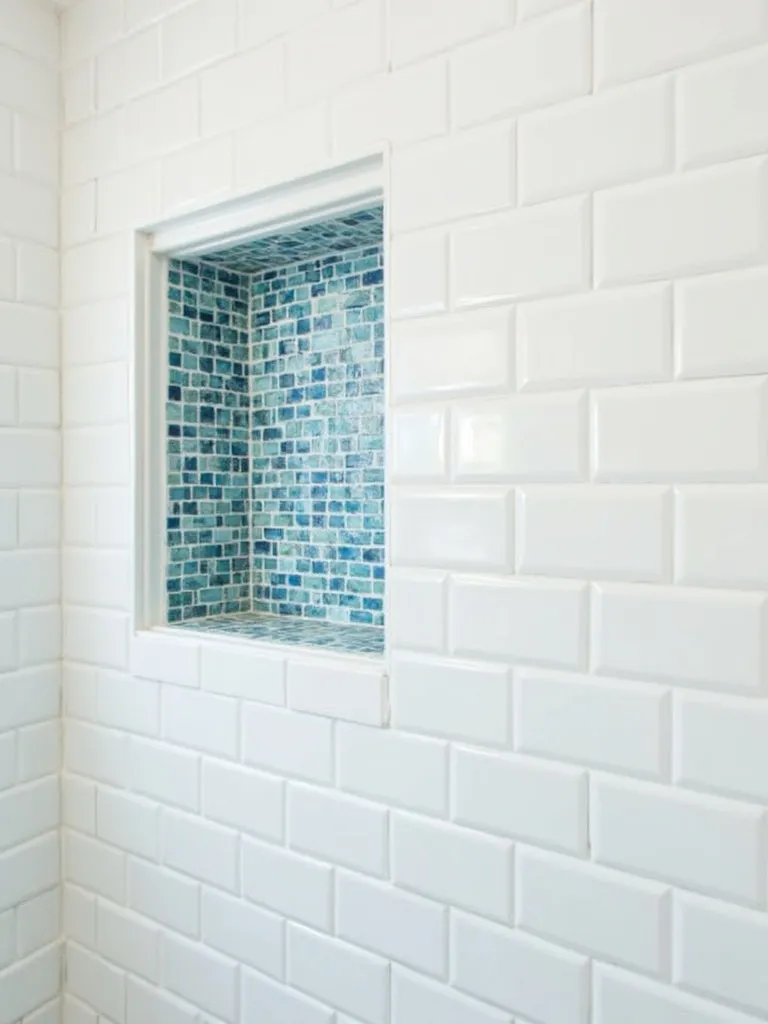
The key to successful niche design lies in considering both the practical and aesthetic aspects of these spaces. A well-designed shower niche should not only safely store your essential items but also create a visual pause in your tile design—a moment of interest that catches the eye and adds depth to your shower space. The choice of tile within these niches can either create a subtle continuation of your main tile design or introduce an exciting contrast that draws attention.
Essential niche design considerations:
Let’s move on to explore how the foundation of your bathroom—the floor—can tie all these elements together.
The bathroom floor serves as the foundation for your entire design, both literally and figuratively. As the largest surface we interact with in the bathroom, the floor has the power to ground us in the space and set the tone for our entire bathroom experience. Thoughtful floor tile selection can create a sense of stability and comfort while contributing to the overall aesthetic of your sanctuary.
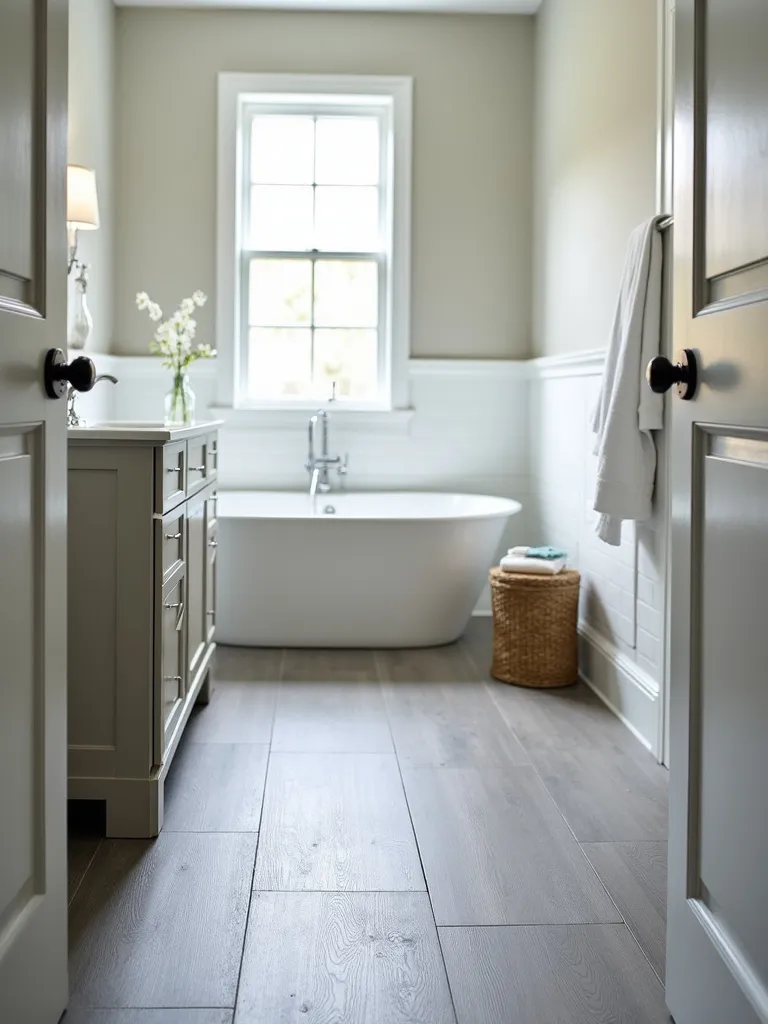
When considering bathroom tile ideas for flooring, it’s essential to balance beauty with practicality. The floor must withstand daily traffic, resist moisture, and provide safe footing while contributing to your desired atmosphere. Modern options like wood-look porcelain tiles offer the warmth and beauty of natural wood with the durability and water resistance necessary for bathroom applications.
Floor tile selection criteria:
Throughout this exploration of bathroom tile ideas, we’ve discovered how thoughtful tile selection and placement can transform an ordinary bathroom into an extraordinary personal retreat. From the grounding presence of large format tiles to the playful charm of penny rounds, each option offers unique opportunities to create spaces that support both our practical needs and emotional wellbeing.
Remember that the most successful bathroom designs are those that resonate with your personal style while supporting your daily rituals. Whether you’re drawn to the timeless elegance of natural stone, the bold energy of geometric patterns, or the serene simplicity of neutral tones, let your choices reflect your unique perspective and lifestyle needs.
As you embark on your own bathroom transformation journey, consider how each tile choice might contribute to creating a space that nurtures and inspires. After all, the bathroom is where we begin and end each day—it deserves to be a sanctuary that supports our wellbeing in every possible way.